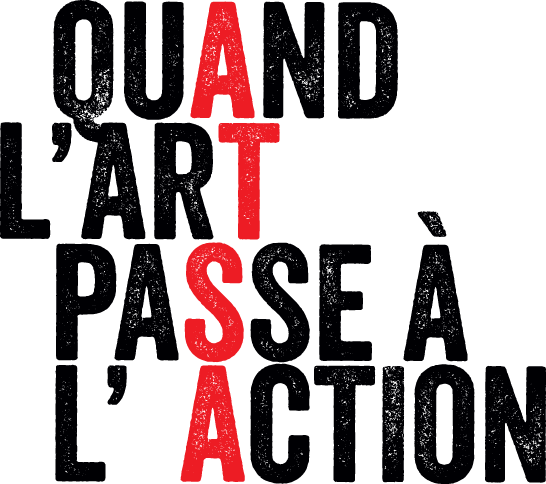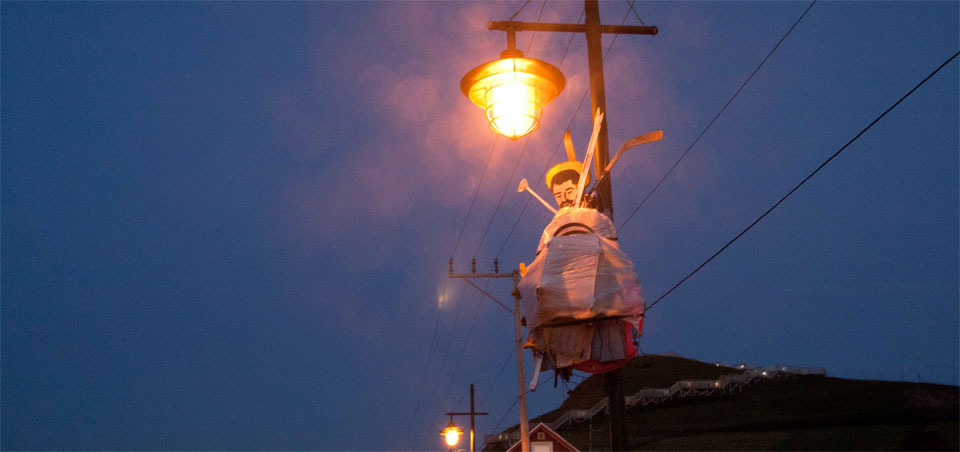Last July 6 through 27, ATSA participated in “Faire Avec,” an in situ art symposium organized by the Ad Mare centre in the Îles-de-la-Madeleine. Curator Véronique Leblanc gathered 10 artists in residency to have them reflect on the issue of waste management, something of particular concern in an insular context.
ATSA's contribution was Tumentia Quisquiliae Magdalene (signifying “tumours from the rubbish of the Magdalen Islands”), a trail of seven mock tumours on trees, made from materials gathered at the Îles-de-la-Madeleine waste depot and hung from seven street lamps along the Rue du Quai in Cap-aux-Meules. The tumours were accompanied by several copies of an explanatory text on the work and the history of waste management.
Presentation on street lamps (in french)
Tumentia Quisquilae Magdalene was a playful, awareness-building installation, drawing a parallel between a contagious disease of epidemic proportions and the exponential growth of waste in our hyper-consumerist societies. ATSA had no intention of stirring the ire of locals, yet certain people saw the work as an insult to the beauty of their landscape. ATSA was very surprised and not at all prepared for such vitriolic reactions, which surfaced in social media, among other places. In retrospect, we realize the work was hijacked for political ends that went beyond any legitimate controversy it might have caused, and it paid the price for it. In the spirit of preserving the social peace in this island community where “everyone knows each other,” the work was dismantled two weeks earlier than planned and brought back to Faire Avec headquarters. ATSA had no choice but to acquiesce to this partners' decision, but nonetheless insisted on telling its story on the street lamps and on politely replying to the numerous comments made on Facebook...
The little story (in french)
This mini tidal wave of controversy raised a number of interesting questions and issues, including: the responsibility of artists and/or artists' centres with respect to the social acceptability of in situ works, and the common strategies to adopt based on the public's reception of such works; the specious notion of beauty in contemporary art; the place that artistic innovation and freedom of expression have in such a context; the manner in which perceptions may shift from one urban or rural setting to the next; the ease with which people resort to intimidation tactics on social media, which then precludes the openness of mind necessary to engage in genuine debate or discussion.
When the outcry occurred, the AdMare centre took swift, multipronged action: damage-control interviews on local radio, hanging of photographs of the works on the street lamps, an article in the local newspaper, an event whereby island residents could adopt a work, and other initiatives. It also, notably, organized a debate at the Pas Perdus venue, broadcast on CFIM, on the aforementioned issues that continue to inform our reflections. Despite the hubbub, we thoroughly enjoyed our Îles experience. We are quite proud of our work and we support the AdMare centre's team and mandate in such a sensitive dissemination context.

